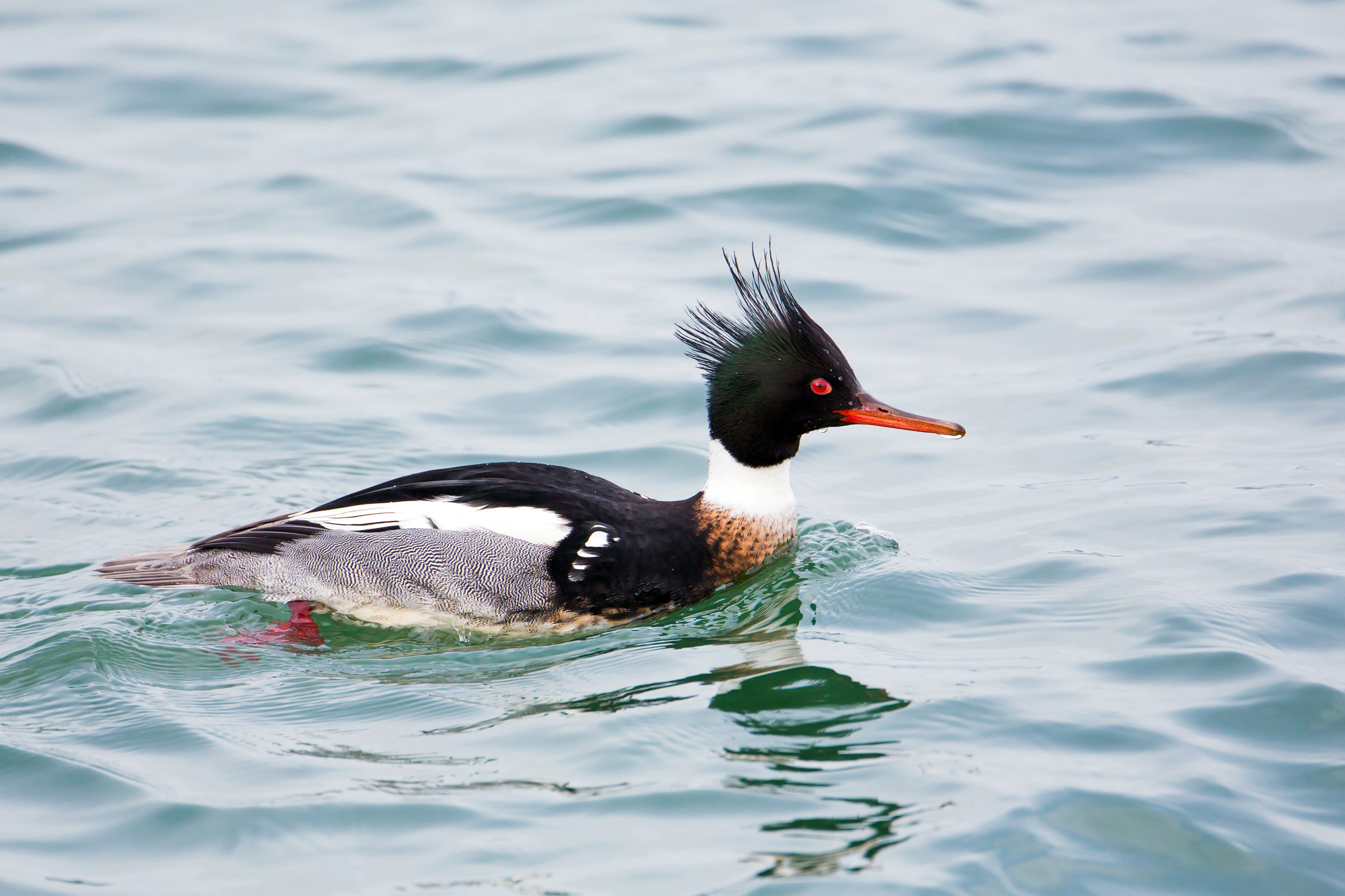Bird of the Month: Red-breasted Merganser
By Andy McCormick
PC: Mick Thompson (Red-breasted Merganser)
Scientific Name: Mergus serrator
Length 23 in
Wingspan 30 in
Weight: 2.3 lb
AOU Band code RBME
Looking a bit like, “a casual, unkempt teenager with a spiky ‘punk cut’ crest,” (Dunne, 2006), the male Red-breasted Merganser strikes a bold appearance when in its alternate, breeding plumage. The crest is finely feathered and two-pointed and seems to disappear at a distance because it is so thin. Overall the Red-breasted is a more spindly-looking bird than the Common Merganser (M. merganser). It is also found in different habitat.
On the Pacific Coast it winters in protected coastal waters often near jetties, boat channels and other shallow areas (Bell & Kennedy). Wintering Red-breasted Mergansers can be found all along the Pacific Coast including around Baja California and the Northern Mexico mainland. It arrives in Washington waters in October but larger numbers appear in November. Although it is most often found in marine waters, during migration it can gather in large flocks in the Great Lakes as it passes along the Central Flyway.
It is in the genus Mergus, a common Latin name given to several seabirds, from mergo, to plunge or dive. The Red-breasted Merganser has a serrated bill hence the genus name serrator, Latin, one who saws (Holloway). The fine-toothed bill aids in capturing fish underwater. Red-breasteds often feed in flocks in a cooperative line moving fish ahead of them. They have a varied diet of aquatic animals but an individual bird will eat the most available item in its area including: sculpin, herring and salmon, as well as herring and salmon eggs, and crayfishes and shrimp.
Red-breasted Mergansers begin northerly migration in March and arrive on the high arctic breeding grounds in May. It is a holarctic species nesting across North America, Greenland, northern Europe and Asia. About 237,000 birds populate the North American Pacific rim area (Titman). The males display in a remarkable courtship ritual described by Titman:
“In Salute-Curtsy, crest is suddenly depressed, and head is dropped with bill just above water, then jerked up into salute, neck forming a straight line 80° above water; chest and neck are then abruptly dropped into water and tail is bent under in a pivoting movement; sometimes associated with a kick. Head returned so bill is parallel to water at either a low-median or elevated position relative to normal body. When head is fully forward in Salute Posture, white of neck and anterior pattern are most conspicuous. During Salute, a nasal whining catlike yeow call is produced with bill open, and with dip into Curtsy, bill is opened again and a second soft yeow can be heard. Several males display in synchrony or near synchrony swimming ahead of Inciting female. Often males Turn-the-Back-of-the-Head to courted female to end display sequence.”
The female selects a simple depression or shallow burrow and lines it with down. Usually 7-10 olive-buff colored eggs are deposited and then incubated by only the female for about a month. A day after hatching, the female leads the young to water, where they feed themselves. First flight occurs about two months after hatching.
Worldwide Red-breasted Merganser populations have been dropping steadily but they have increased in the Pacific Rim region. More study is needed to learn more about this elusive species.


